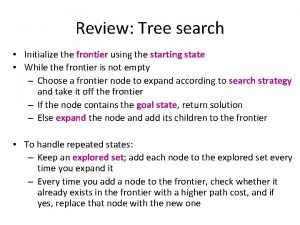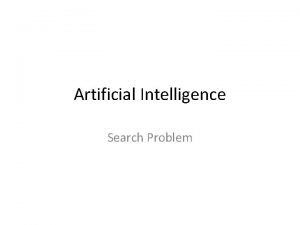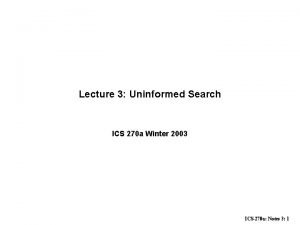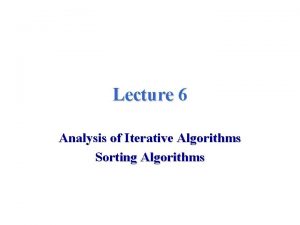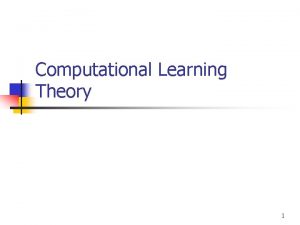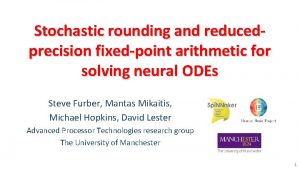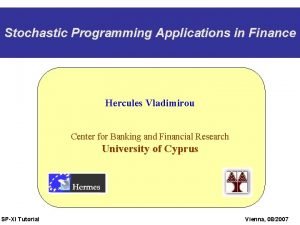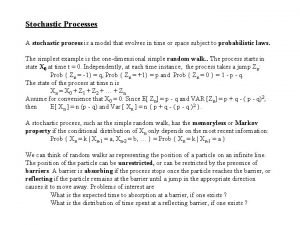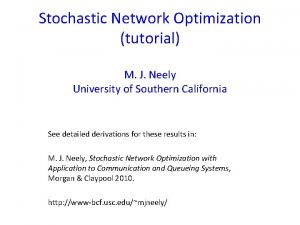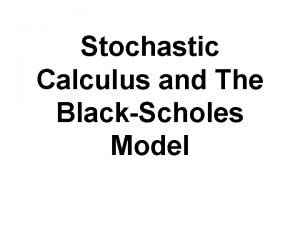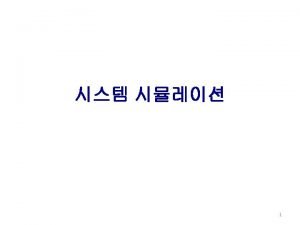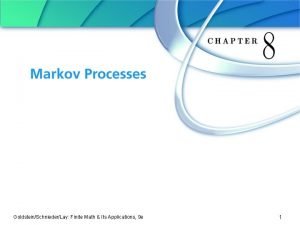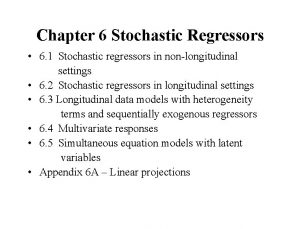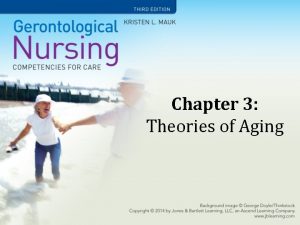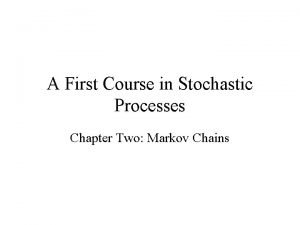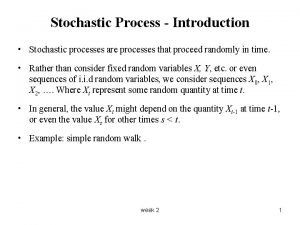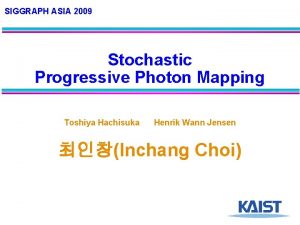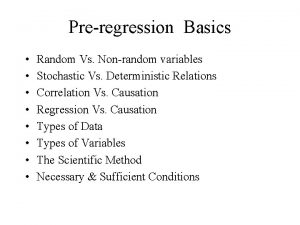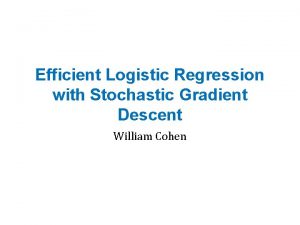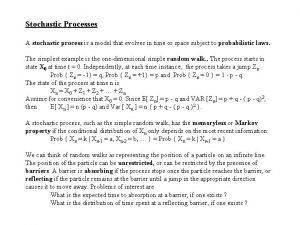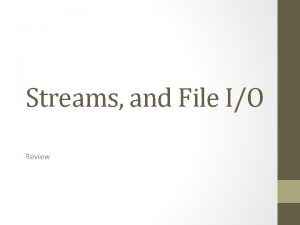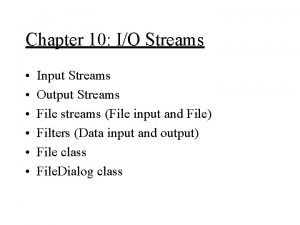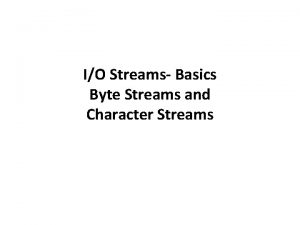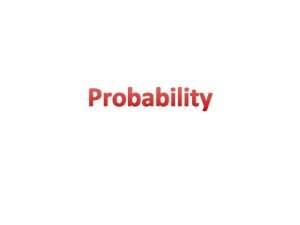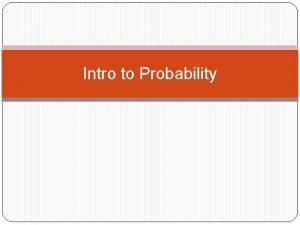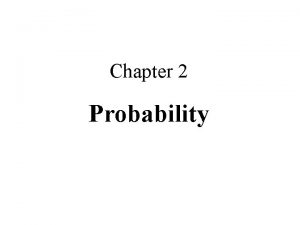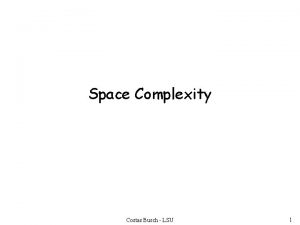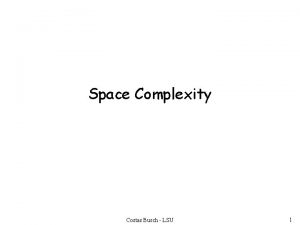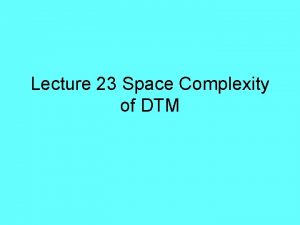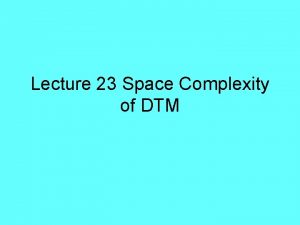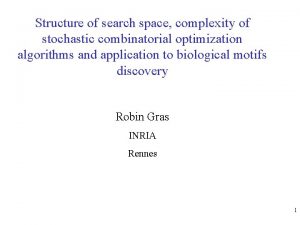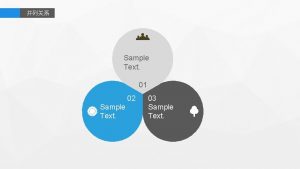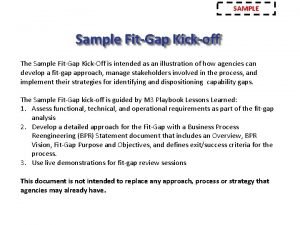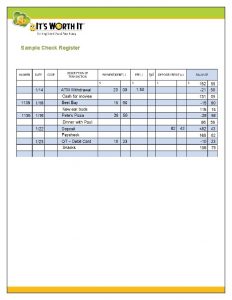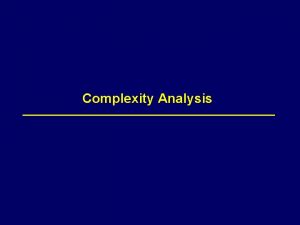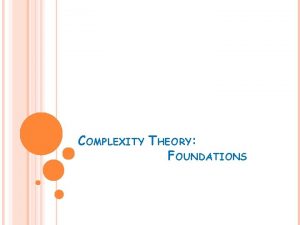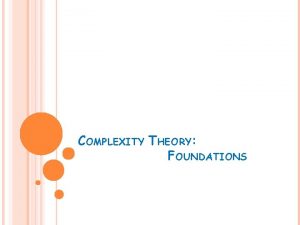Stochastic Streams Sample Complexity vs Space Complexity David
















![Space/Time Tradeoff for Connectivity [Feige] • x x Otherwise, suppose we are in phase Space/Time Tradeoff for Connectivity [Feige] • x x Otherwise, suppose we are in phase](https://slidetodoc.com/presentation_image_h/0cfe3664d1289ca25368bedfc5ed69ba/image-17.jpg)






- Slides: 23

Stochastic Streams: Sample Complexity vs. Space Complexity David Woodruff IBM Almaden Joint work with Michael Crouch, Andrew Mc. Gregor, and Greg Valiant

Motivation • (Well-studied) Statistics question: how many samples from a distribution are needed to estimate a property of a distribution? • (Well-studied) Streaming question: for a given fixed stream of samples, how much space is needed to estimate a property of a distribution? • Our work: understand the tradeoff between the sample and space complexity

Model 4 3 7 3 1 1 2 … • Algorithm sees a stream of i. i. d. samples from a distribution • Algorithm only has 1 pass over the samples • Goal: understand the tradeoff between the number t of samples needed to solve a problem, versus the space s of the algorithm

Problems •

Talk Outline • Sample/Space Tradeoff for Collision Probability Estimation • Sample/Space Tradeoff for Deciding Connectivity • Sample/Space Tradeoff for Determining if a Subspace is Full Rank

Collision Probability •

Collision Probability Algorithm • Break the t samples into t/w contiguous groups of w samples 4 … 3 Group 1 • 7 … Group 2 3 1 … Group 3 1 …

Collision Probability Algorithm •

Collision Probability Lower Bound •

Collision Probability Lower Bound • … …

Collision Probability Lower Bound •

Talk Outline • Sample/Space Tradeoff for Collision Probability Estimation • Sample/Space Tradeoff for Deciding Connectivity • Sample/Space Tradeoff for Determining if a Subspace is Full Rank

Graph Connectivity • Given t independent edges chosen with replacement from graph G, decide if G is connected • Simulate a random walk starting at node 1 • Store current vertex • If see an edge not incident to the current vertex, discard it • Remember first node i which you haven’t seen. Finish when i > n

Graph Connectivity 2 Start at vertex 1 Current Vertex: 3 1 1 First Untouched Vertex: done 23 4 4 See IID Stream: {1, 4}, {2, 3}, {1, 4}, {3, 4}, {1, 2}, {2, 3}, {1, 2}, {3, 4} do nothing

The Loopy Graph •

Use More Space and Fewer Samples •
![SpaceTime Tradeoff for Connectivity Feige x x Otherwise suppose we are in phase Space/Time Tradeoff for Connectivity [Feige] • x x Otherwise, suppose we are in phase](https://slidetodoc.com/presentation_image_h/0cfe3664d1289ca25368bedfc5ed69ba/image-17.jpg)
Space/Time Tradeoff for Connectivity [Feige] • x x Otherwise, suppose we are in phase 2 x x Will sample a vertex from each group of k vertices

Implementation in the IID Model •

Talk Outline • Sample/Space Tradeoff for Collision Probability Estimation • Sample/Space Tradeoff for Deciding Connectivity • Sample/Space Tradeoff for Determining if a Subspace is Full Rank

Determining if a Subspace Has Full Rank •

Statistical Query Framework •

Statistical Query Framework •

Conclusions • Studied space versus sample tradeoffs in the data stream model • Obtained tradeoffs for statistical, graph, and linear algebra problems • Open questions: tighten our bounds • General question: unify the techniques for the different problems
 Time and space complexity
Time and space complexity Space complexity bfs
Space complexity bfs Space complexity bfs
Space complexity bfs Image search
Image search Bfs time complexity
Bfs time complexity Space complexity of insertion sort
Space complexity of insertion sort Sample complexity for finite hypothesis spaces
Sample complexity for finite hypothesis spaces Stochastic rounding
Stochastic rounding Stochastic programming
Stochastic programming Stochastic process model
Stochastic process model Wan optimization tutorial
Wan optimization tutorial Deterministic and stochastic inventory models
Deterministic and stochastic inventory models Liabulities
Liabulities Stochastic vs dynamic
Stochastic vs dynamic Absorbing stochastic matrix
Absorbing stochastic matrix Regressors meaning
Regressors meaning Non stochastic theory of aging
Non stochastic theory of aging A first course in stochastic processes
A first course in stochastic processes Stochastic process introduction
Stochastic process introduction Stochastic progressive photon mapping
Stochastic progressive photon mapping Agent a chapter 2
Agent a chapter 2 Discrete variable
Discrete variable Gradient descent java
Gradient descent java Stochastic process modeling
Stochastic process modeling


